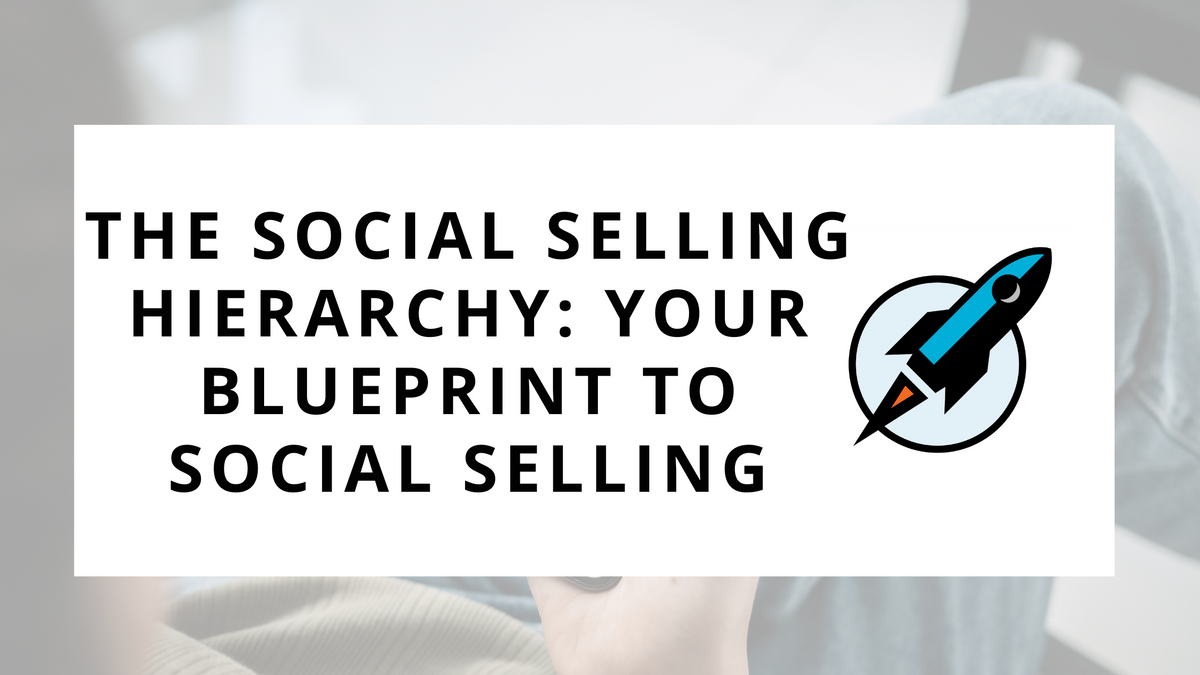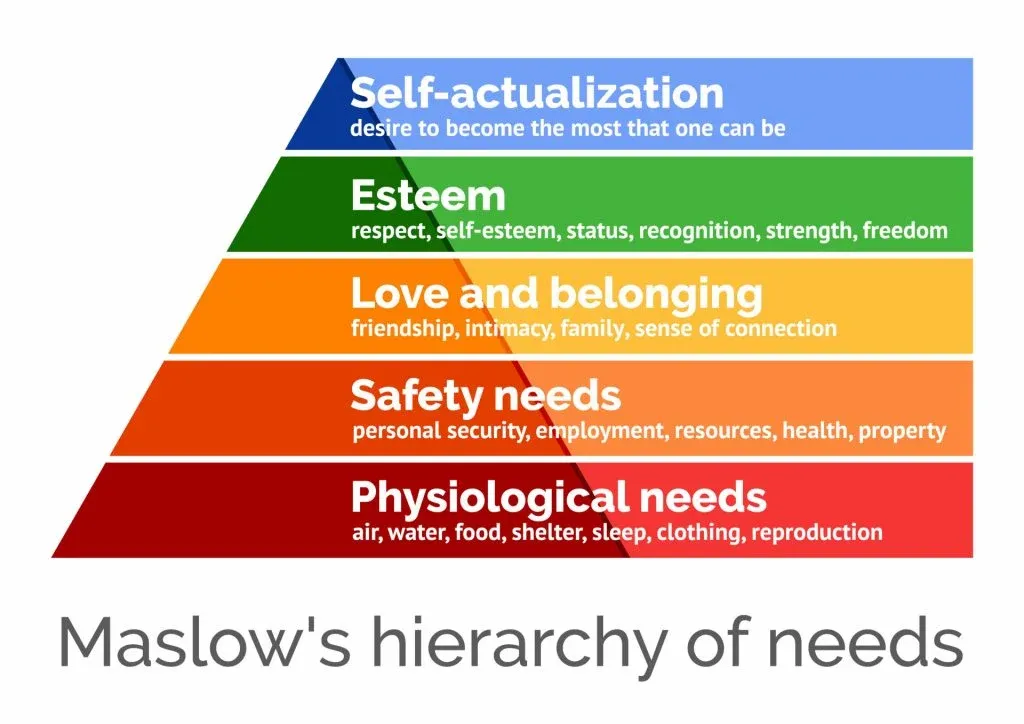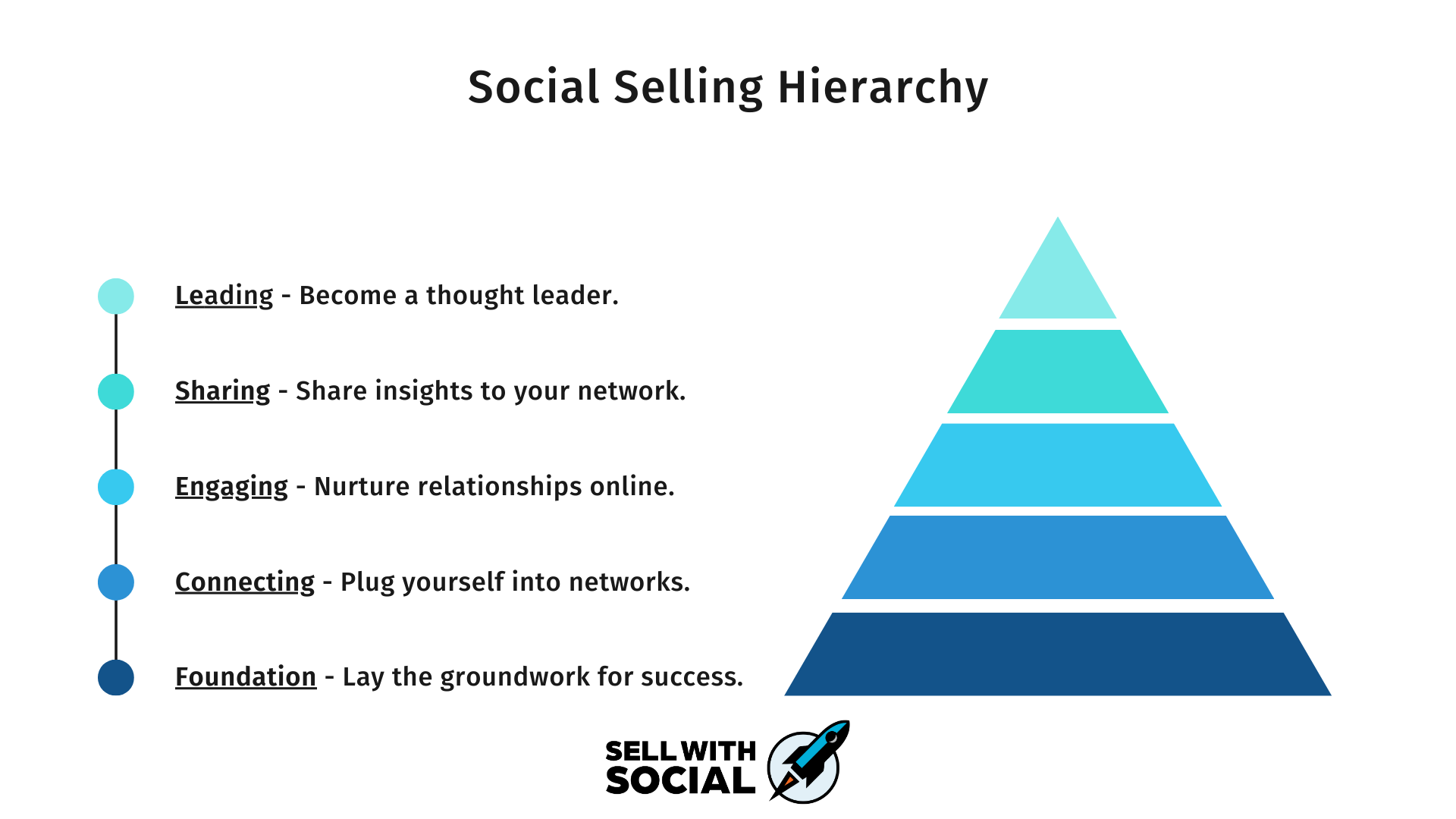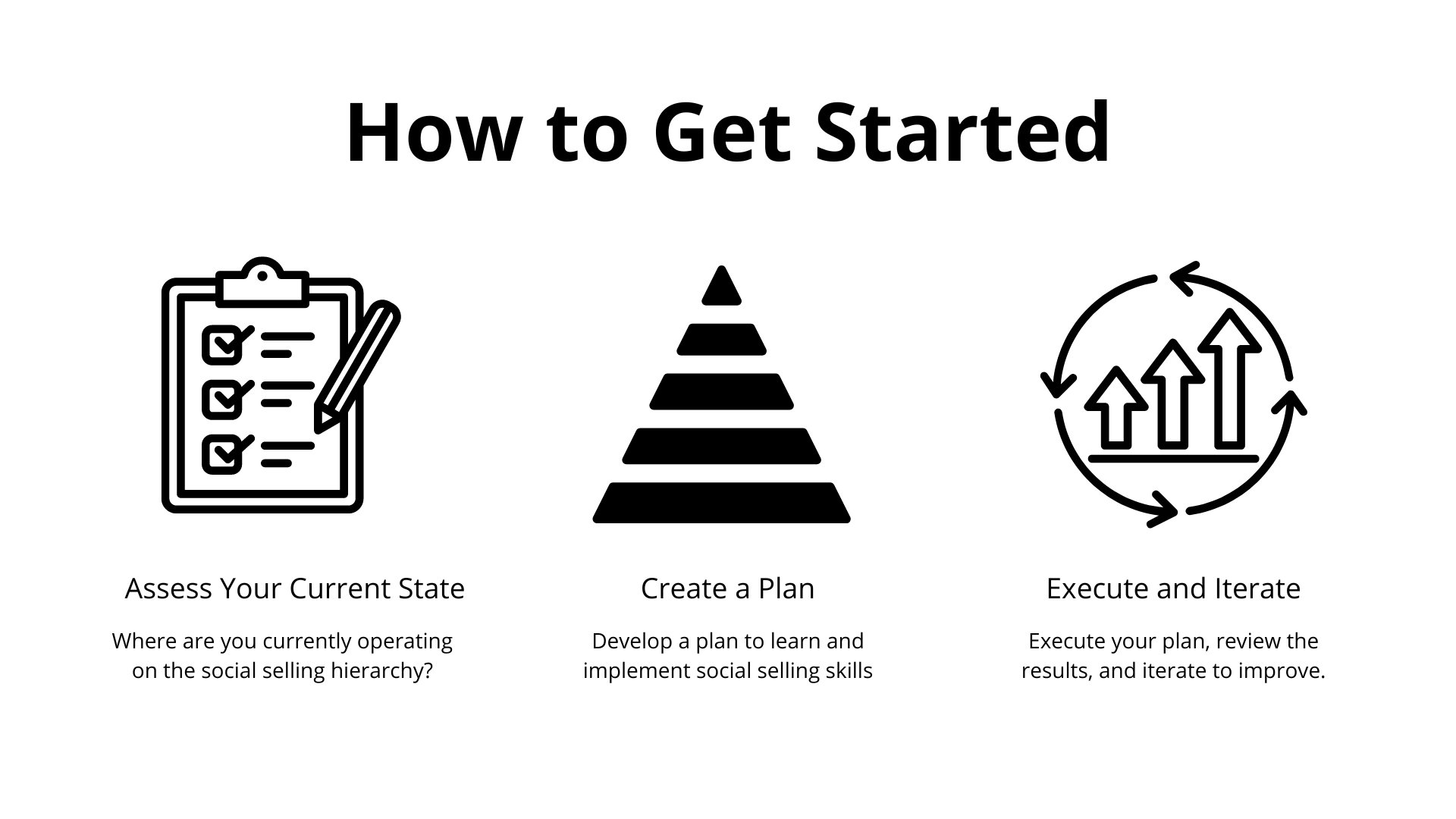The Social Selling Hierarchy: Your Blueprint to Social Selling

As your customers increasingly turn to social media platforms to interact and make purchasing decisions, social selling activities are becoming an essential part of a modern sales strategy.
Social selling, or the practice of leveraging social media to connect with prospects, build relationships, and ultimately drive sales, has emerged as a powerful tool for sales reps.
I’ve covered the benefits of social selling in the past, but briefly, I see it as an essential way to leverage the power of digital sales to expand your reach, build your authority, and increase your sales.
So it’s no longer a matter of IF you should be social selling, but instead HOW you should get started.
In this edition of Sell with Social, I share the framework I use to implement a social selling strategy. We’ll talk about the steps to implement and how to get started.
PSYCH 101: Maslow’s Hierarchy of Needs
Before we dive into social selling, let’s first go back to Psychology 101.
Maslow's Hierarchy of Needs, proposed by psychologist Abraham Maslow in 1943, is a widely recognized theory that explores the fundamental human needs and motivations that drive our behavior.
This hierarchical model suggests that individuals are motivated to fulfill specific needs in a prioritized manner, starting from the most basic physiological needs and progressing toward higher-level psychological needs.
The hierarchy is structured into five levels, arranged in a pyramid shape, with the most essential needs at the bottom and the more complex needs at the top.

Here's a brief explanation of each level:
- Physiological Needs: At the base of the pyramid are the physiological needs, which represent the most fundamental requirements for human survival. These needs include air, water, food, shelter, clothing, and other basic necessities. When these needs are unmet, they become the primary focus of an individual's motivation.
- Safety Needs: Once physiological needs are satisfied, the focus shifts to safety needs. These needs involve seeking protection from physical harm, danger, and uncertainty. Examples include personal security, financial stability, a stable job, and a safe living environment.
- Love and Belongingness Needs: After achieving safety, individuals seek social connections and a sense of belonging. These needs encompass the desire for love, friendship, family, and community acceptance. Human beings are inherently social creatures, and meeting these needs fosters a sense of belonging and emotional support.
- Esteem Needs: Esteem needs involve the desire for recognition, respect, and a positive self-image. This level is divided into two subcategories: the need for self-esteem (feeling competent and valued by oneself) and the need for esteem from others (receiving recognition and appreciation from others).
- Self-Actualization: The highest level of the pyramid is self-actualization, which represents the pursuit of personal growth, fulfillment, and reaching one's full potential. This need involves a deep desire to become the best version of oneself, to achieve personal goals, and to find a greater sense of purpose and meaning in life.
According to Maslow, individuals progress through these levels in a sequential order. Each level must be at least partially satisfied before higher-level needs become motivating factors. Moreover, self-actualization, while the ultimate goal, is a continuous and ongoing process rather than a final destination.
This brings us to how you can plan your development of a social selling strategy…
The Social Selling Hierarchy of Needs
Implementing a social selling strategy is more than just a one-and-done action. It’s an iterative process that requires you to move through stages of skill development and execution—rinsing and repeating.
When I coach sales reps, I emphasize that social selling results increase exponentially over time, as layers of skills and actions are built upon one another.
Like Maslow’s Hierarchy of Needs, there are stages of social selling strategy development that should be implemented in successive order. I call this the Social Selling Hierarchy of Needs.

The social selling hierarchy provides a blueprint for implementing a social selling strategy. Just like Maslow’s hierarchy of needs, the social selling hierarchy is a step-by-step, cumulative process for social selling success.
The stages of the hierarchy are the following:
Foundation - At the base of the social selling hierarchy is the foundation. This is the stage where you define essential parts of your overall strategy, including your target customer, how they buy from you, and your value proposition.
- Develop a Customer Persona(s)
- Outline Your Buyer’s Journey
- Create an Elevator Pitch
Connecting - Once the foundation is set, you can start plugging yourself into social networks. This is where you expand your network by creating new connections, joining groups, and optimizing your profile for success. This stage is crucial in building a network that will allow you to expand your reach further in the hierarchy.
- Make 5+ Connections Daily
- Join Relevant Groups
- Optimize Your LinkedIn Profile
Engaging - With new connections being made, it’s time to start engaging and nurturing those relationships. This stage is all about nurturing new connections through tactics like social listening, direct messages, and engaging with others’ posts.
- Implement Social Listening
- Use Direct Messages
- Commenting and Reacting to Posts
Sharing - By this stage, you’re ready to create and publish content to your network. This is where you begin to share insights and provide value by creating text, video, and image content regularly.
- Add New Posts of Your Own
- Share Resources
- Tag People and Companies in Posts
Leading - The highest level of the social selling hierarchy is leading. At this stage, sales reps become thought leaders in their industry and are seen as a trusted authority. They build up an audience of people that follow them specifically for their message.
- Start a Micromovement with Your Message
- Build an Audience and Following
- Become the Favorite Teacher (Thought Leader)
To reiterate, it’s important not to skip ahead in the hierarchy. The skills and strategies build upon each other and provide important context. Each level must be at least partially satisfied before higher-level strategies become successful factors.
From my experience working with sales teams, it typically takes 12-18 months to move up and master the entire social selling hierarchy. Yes… that’s a long time! But that’s more the reason to get started today.
Getting Started with Social Selling
Now back to the original question… how to get started?
Level by level, the Social Selling Hierarchy provides a framework that you can use to begin your strategy.

To get started, do the following:
- Assess Your Current State - Look at your current skills and strategy. What stage of the hierarchy are you on? Have you skipped some essential steps? Make an assessment so that you can know where to begin.
- Create a Plan - Next, plan how you will begin to work your way through the social selling hierarchy. Consider what information you’ll need to learn, skills you need to develop, and actions you must take to get started.
- Execute and Iterate - Then it’s go-time. Get started executing your social selling strategy plan. Continue to review your results, make changes, and iterate to improve as you move forward.
This strategy is simple, but not easy.
The reason that only a minority of sales reps are reaping the full benefits of social selling is that it takes consistent effort over a period of time. But with this social selling hierarchy framework, you now have a path to get started.
If you are committed to getting started, you can check out our Social Selling Boot Camp. It’s a 6-week, cohort-based workshop, where we use the Social Selling hierarchy as a framework to implement a social selling strategy.

For this week’s action items, I want you to create a plan around your social selling strategy.
While you can’t become a master social seller in one week, you can begin to take that first step in your journey.
For this week, I want you to take the following actions:
- Review the Social Selling Hierarchy - Review the outline above and/or watch my recent LinkedIn Live Webinar on the topic. Where do you see yourself on the hierarchy? Understanding the broader strategy will help you identify what actions you need to take today to get results tomorrow.
- Get Started - Then take that next step that you need to get started. Whether it’s foundational work, making connections, engaging with people’s content, sharing your own, or developing a thought leadership brand. Get strategic with your social strategy so you can reap the full benefits.
For those who want to dive deeper into this framework and have accountability from a group of peers, I invite you to join the upcoming Social Selling Boot Camp.
And always, drop a message in the comments or send me a message with any questions you have.
